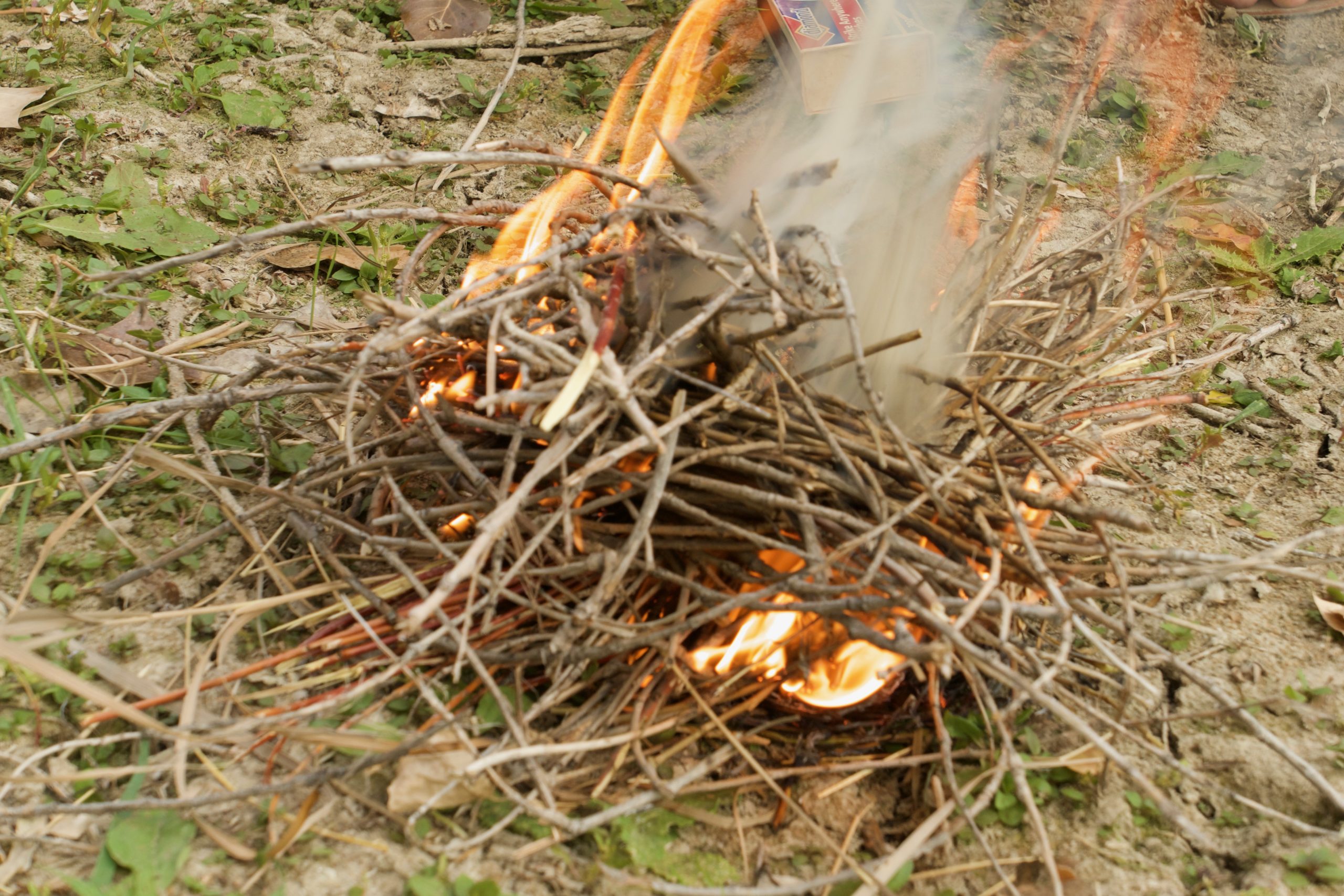
Fire Making Progressions

Fire Making Progressions
At times while teaching primitive skills, I feel like a reverse time traveler. The quest to develop mastery in the skills of our ancestors often necessitates starting in the modern world, and then moving backwards in time. Fire making is a perfect example. Fire is a powerful teacher, especially in Colorado and the West. It is an integral piece of our wilderness expeditions and camps, yet a continuous eye to safety is essential. Last year, due to fire bans, we were unable to work on fire at all. This year, we have explored as many aspects of firemaking as possible.
Modern Era- Learning the basics.
We almost always start making fire with matches. This gives us the space to work on many of the fire related skills, while making ignition itself relatively easier. We focus on tinder bundles, fire structures, and maintaining a fire, developing a bed of useful coals. Our goal is to work towards using a single match, no matter the conditions, and in dry weather to make a fire in under five minutes.
Modern Era Phase Two- Modern survival methods
Once we are comfortable with matches, we begin to use modern survival fire lighting methods, typically focusing on firesteels, or ferro rods. A mainstay in the bushcraft tool kit, firesteels give us a greater understanding of different types of tinder, and can broaden our horizons. This is also when we might work on feather sticks, combining knife skills and control with fire making. Once again, our goal is to make fires in five minutes or less.
Traditional Era- Focusing on tinder
Next is traditional flint and steel. Flint and steel incorporates another element, using charcloth to catch a spark and create an ember. This is the first method that doesn’t result in instantaneous flame. An ember has to be nurtured, and blown into flame. Tinder selection becomes even more critical, and fire structure almost second nature. Interestingly, flint and steel can quickly become a favorite method. One of the students in our Teen Homeschool program told me yesterday that he thought traditional flint and steel is his favorite fire making technique.
Primitive Era- Putting it all together
The final step, but in reality the true beginning to all of this in my mind is friction fire. Usually once students have been with our youth homeschool program for a year or two, we introduce bowdrill. This is when the magic really starts. We begin with reliable kits that the instructors have made, proven bowdrill kits so that we can focus on correct form. The physical movements of bowdrill are unlike anything else we experience in modern life, and can take time to develop the motor skills to have success. We introduce it for a couple of weeks, then set it aside, then later approach bowdrill again. In the beginning we usually have two students working together, to increase their collective strength and endurance. At a certain, magical moment, it clicks. A coal is made, then another and suddenly the student is unstoppable. This usually happens in our teen programs, often on Teen Wilderness Expeditions, though in homeschool programs as well. Then we throw the kitchen sink at them. They carve their own kits. Then we get them to make coals blindfolded. Then we dunk their kit in water. As each challenge is overcome, their confidence grows and grows, which is then reflected in other skills and beyond Laughing Coyote.
Firemaking in many ways is the doorway to the world of primitive skills, and living closely with the earth. Learning to make a bowdrill consistently, and moving from there to the magic of the handdrill, creates a internal shift that changes our perspective forever. When traveling to new places, or deep into the wilderness, friction fire becomes a constant companion to develop a personal relationship to our surroundings.
~Neal Ritter



